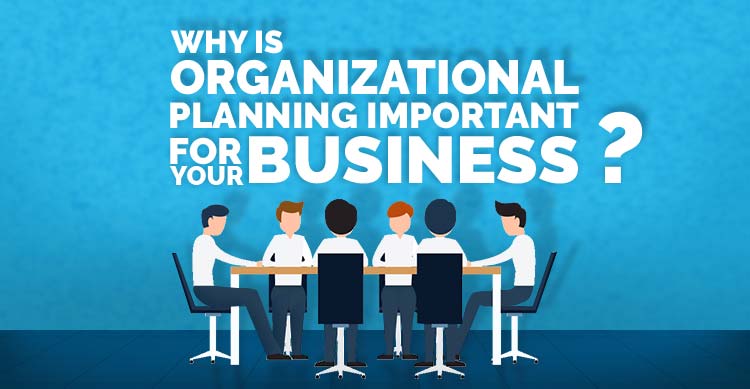
Every organization sets some major goals for a coming year or a longer period.
But goals are nothing without a pathway to reach them.
Deciding that path is called organizational planning.
This planning can focus on one department or it can cover an overall organization-wide strategy. Most companies create both kinds of organizational plans to manage business smoothly.
With strategies and planning, an organization can direct resources, energy and time in the correct direction to win relevant results. Every person in the company becomes aware of how to work and what to do, so that, the whole organization can reaches pre-decided goals.
In an overview, here is what an organizational planning does for you:
- Offers a clear purpose to your organization.
- Operational requirements become visible, which helps in human resourcing.
- Allows a department-wide assessment of opportunities.
- New ideas and innovative thinking come up.
- Every staff member knows what you want from them.
- A planned business approach helps in attaining a competitive edge.
- All the financial resources are used in a prioritized manner.
- Organization’s leaders become aware of the initially required actions.
Let’s discuss organizational planning in a detailed manner.
A purpose for the existence of an organization
A purpose is a foundational mission of an organization.
No business can survive in the long run without having a clear mission.
Organizational planning begins with the definition of mission for the business.
The purpose is not a goal. A company can have plenty of goals, but they all lead to one collective purpose.
Goals in an organization change from time to time, but the purpose of existence stays the same.
You can look at it as the one giant plan that helps in the foundation of a business. It is the first idea in the mind of a business leader that triggers the establishment of an organization. This giant plan then gets distilled and synthesized in smaller versions of missions and visions.
The purpose has to be broad and specific at the same time. The whole management level should understand the purpose.
At the same time, your employees should be able to understand the purpose and apply it to the ground level of working.
Measurable goals to define a better position
Organizational planning is expressed in the form of measurable goals. A company needs to know specific answers to what is required, where to go, how to use resources and how to manage it all. Hence, every goal should provide the opportunity to measure the results.
When planning, organizational leaders ensure the specific nature of a goal.
So, instead of saying-
“We need to grow our business in the next 5 years.”
The business leaders say-
“We need to obtain 40 percent increase in sales in the next 5 years.”
This way, the sales department knows a measurable parameter of success in the next 5 years. So, all other departments in the company can empower the sales department to reach that goal.
An organization can similarly plan goals for other departments, products, services or the whole brand.
Evaluating established goals and ongoing progress
There’s a big reason why organizational planning is called an ongoing process.
Every objective or goal defined at a time depends on the best-known information available in front of the business leaders.
An organization can surely utilize available data for future predictions. But those predictions require realistic assessments from time to time. That’s why organizational planning is important for a business.
An effective planning or strategy involves the assessment process of progress and goals. For example, a company can decide to gain 40 percent of sales growth in the coming 5 years.
But what if in first 3 years, competitors attain 30 percent sales growth. In that situation, it would be wise to rethink goals and modify for better results.
It is simple. Time clarifies the results, which helps in making better decisions. Goals are definitely important to begin the progress in the first place.
But, at the same time, organizational goals require valuable changes according to the latest knowledge. Which is why organizational planning becomes an important and ongoing process for your business.
Making decisions and strategies
Going deeper than purpose and goals, your employees need actionable work strategies. As it is important to make daily organizational functions directed to a large goal, organizational planning becomes important again.
Business leaders make decisions and decide strategies for employees in different departments. Those decisions and strategies create a responsible sense of working in the company, which leads to faster goal attainments.
Each small activity conducted on a daily basis, then, leads to larger goals and purpose attainment.
Prioritized and efficient application of resources
An organization goes through different stages of business. The availability of resources depends on the stage of an organization.
For example, a small startup usually faces a limitation of resources as compared to a well-established organization.
Resources include everything that is available for expense in a company. This includes financial resources, human resources, and business-specific resources.
Organizational planning allows leaders to identify the extent of resources available. Leaders can define how comfortable or limited the business is in terms of resources. This awareness leads to a sense of prioritization.
With planning, your business can prioritize goals and strategies with respect to the available resources. This way, your business can maximize productivity with an efficient utilization of resources.
Planning for risks and unpredictability
What if a financial crisis strikes the company?!
What if there is a sudden downfall in the market?!
There are various what-if conditions associated with all kinds of businesses. Every organization faces the risks of uncertain conditions.
Though these risks are unforeseen, your organization needs contingency planning to act as quickly as possible. Planning allows leaders to stay calm and make immediate decisions without panicking.
When there is a sudden issue in business, leaders need to fight the problem while maintaining the reputation and functions of the business.
Pre-planned approach for risks helps in applying effective strategies, so your business can tackle the changing scenarios and save the business from negative impacts.
Establishing and encouraging team spirit
With organizational planning, your employees can come together as a team and attain cooperation. An effective communication of plans and strategies allows your staff to start following the same responsibilities.
They all utilize their skills and provide assistance to help the organization collectively.
Whenever a task is assigned to a department, every member already understands what they need to do and how they can help each other.
Planning diminishes the chances of conflicts of interests. From top management to employees, everyone puts efforts to reach pre-decided targets.
Team building is key to establishing and running a successful business. No matter what you do, planning is irreplaceable from team building.
The basic idea of a team is a group of people that follow one collective goal. And that’s what organizational planning does for your employees.
Understanding and beating competition
Along with internal benefits, organizational planning also helps with competitive advantages. Sitting together, business leaders can look deeply into the weaknesses and strengths of competitors.
All major competitors are assessed. This assessment teaches a lot as their strength shows the vulnerability in your business. At the same time, your business becomes aware of in-house strengths, which can help beat the competition.
Competitor understanding also assists in finding many emerging opportunities in the market. Your business can attain new customer groups, find new markets to win and gain innovative ideas to grow steadily.
Tips on successful organizational planning
There is no set formula of organizational planning that can work for all kinds of business structure. Every business consists of different kinds of products, constraints, opportunities, and goals.
So, the actual planning differs from organization to organization. However, every business can follow a certain method of planning to attain goals and grow steadily.
Here are a few tips on building a successful organizational plan:
- Assess your organizational weaknesses and strengths as compared to your major competitors. Relative understanding of weaknesses and strengths provide a realistic approach to planning.
- Go through the legal weaknesses and strengths of your organization. Find all the possible options to legally tackle the disadvantages and turn them into advantages for your business.
- Assess the weaknesses and strengths of each department in your business. Find the co-dependencies of departments and plan to resolve weaknesses.
- Predict a growth pattern you want in a long run. Also, align this long-term plan with short-term growth strategies.
- Understand current relationships in the market and plan to maintain existing relationships and building new ones.
- Define an ideal number of employees in every department and compare with the current availability of human resources.
- Develop a structural approach to work for a higher level of productivity and employee satisfaction.
All in all, your organization requires at every step to follow the right path to growth. Organizational planning offers a path and also tells how to walk that path efficiently.
Keeping that in mind, hopefully, now you are ready to take initial planning steps for your business.












